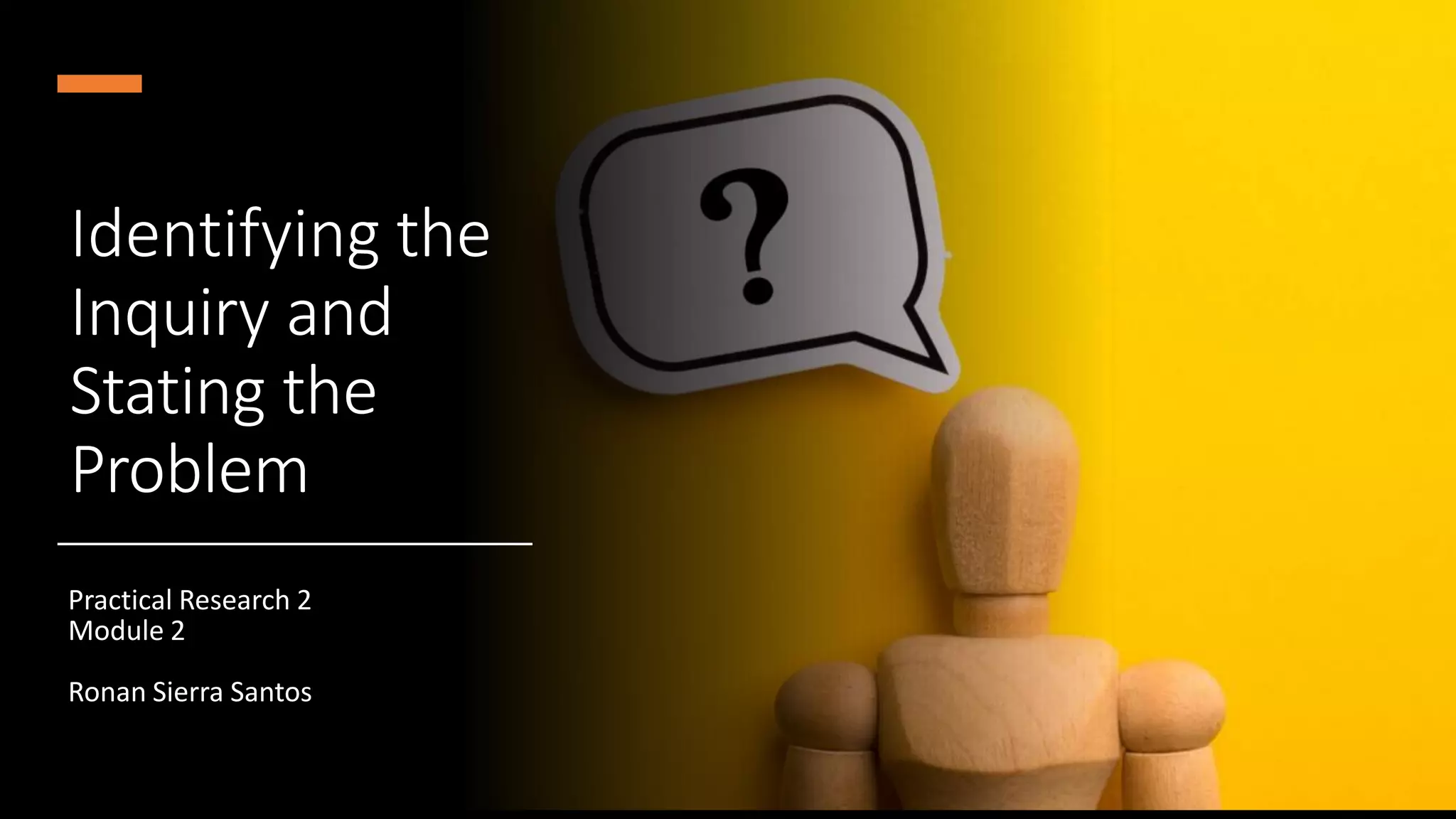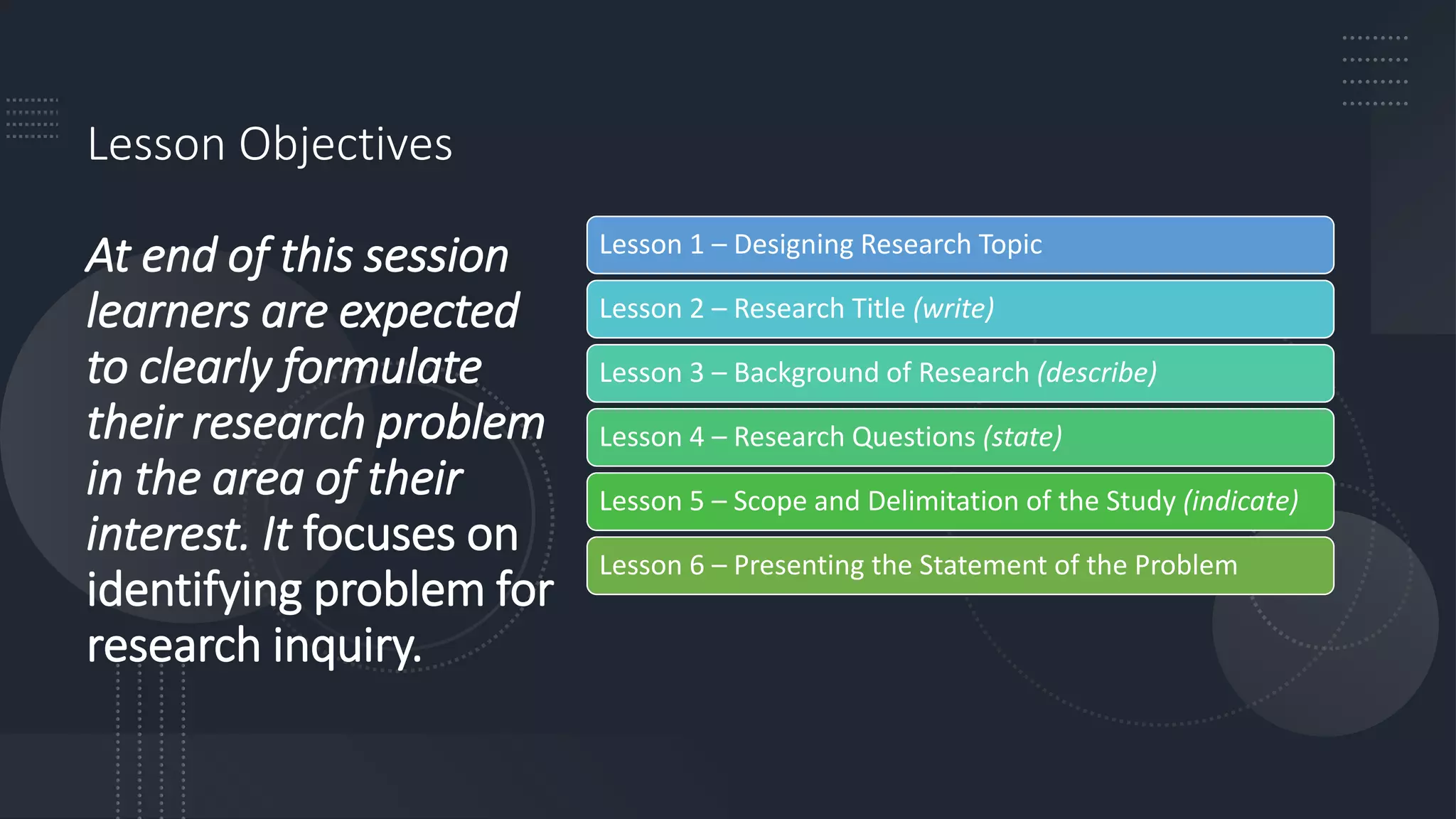This document provides guidance on formulating a research problem and developing key components of a research proposal, including choosing a topic, writing a title, developing a background, statement of the problem, research questions, scope and delimitations, and significance. It outlines the steps to identify a problem area and refine the research question. Key sections of a proposal like the objectives, investigative questions, and parameters are also described. Examples of titles and components like scope and significance are provided.


























